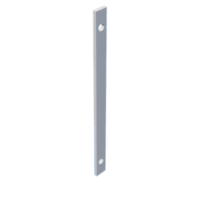Introduction: How Create a Catapult
First of all, what is a catapult, well a catapult is a mechanical device used to launch objects with great force and long distances. They were originally used as weapons in war, especially during the Middle Ages, to throw big stones and fireballs in order to cause damage or knock down enemy fortifications.
Nowadays there are different types of catapults, such as the torsion catapult, which uses twisted ropes or fibers to store energy, and the traction catapult, which uses the power of a counterweight to launch the projectile. Modern catapults can be used in different settings, from launching aircraft on aircraft carriers and the most popular use that is our case, recreat it and experiment with it, after that introduction you may think that it can be so difficult to achieve, but the truth is that is easier than it looks, only you need to decide which type you want to recreate and find the material and a lot of energy and motivation to reach your goal.
Supplies
Materials
Wood bars (4.5x4cmx2m) x 2
Wood bars (4x2cmx2m) x 1
1/4 screws (x26)
3D part (ball basket)
Union Square (x4)
Elastic ropes
Eyebolt (x4)
Clamp (x2)
Step 1: Brainstorm and First Sketch
First, we have to understand how a catapult works, after that, we needed to focus on which type we would recreate and upgrade by ourselves, after some internet research, we found a type that caught our attention was, the tension catapult which consists in using twisted ropes to store and release energy to launch a projectile. After we understood what it was, we put all our ideas together and drew a sketch, at the same time we were thinking about what materials we should use, the main goal was to launch a tennis ball but it had to reach a distance of 10 meters minimum.
Step 2: Make Assembly on Solid Works
Once we knew what we were going to do, we started by sketching each part of the catapult, we had to consider every measurement and take care of the assembly.
Attachments
Step 3: Assembly PT1
After we bought all the required materials, we took measurements of the wood bars, and we cut four of them to measure 48 cm, once we cut it we sanded each one, and after that, we put them together using screws, making a square shape because it was going to be our catapult base, once we have done that, we cut the other bar of 4x2 to 45 cm, they would be the arms of our catapult so we put two of them parallel to each one but in a vertical form and we assembly it by using the square union and putting the screws, at the same time we were printing our 3d pice which was our basket for the tennis ball. But before we made a 2 cm hole in each arm, we needed to put an axis where our main arm could spin, so we added a stick.
Step 4: Assembly PT2
then we created the main arm, cut a wood bar of 35 cm, and made the hole the same diameter as the stick. We noticed that it spin lower, so we made the hole bigger. Hence, the mechanism was better, as we decided that it had to be a tension catapult we needed something that made tension, that's why we installed 3 eye bolts downstairs because it is the point where the elastic rope will pull and make tension to the arm and it works
Step 5: Testing the Product
Once we finished, we started by testing if it reached the required distance, needed more tension, or could shoot and not destroy during the process. We used a paper cup as our basket because our real basket was not finished yet
At the first shoot, we saw that it reached easily 10 meters, so we decided to put more tension in the catapult to see which was its limit, and after 5 attempts, the stick axis got broken so we bought a metal one and added it to the catapult.
Step 6: Upgrades After Testing
Once we finished shooting the test, we added our tighten and release mechanism, by using a rope that pull down the arm and a stick to slow down the arm, also we installed the 3d basket and, we add some mdf details that will give ti support
Step 7: Final Result
After all the hard work we finally finished it, we completed our main goals, and the most important thing, it worked, it took a long time to create but it was deserved, and we're happy with the result because it was honest work and we know how hard was it to do it.





















